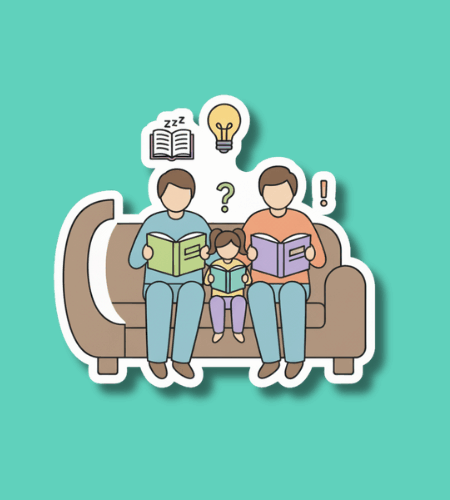National Family Literacy Day, observed each year on November 1, is a day dedicated to celebrating and encouraging families to read, learn, and grow together through shared literacy activities.
Table of Contents
History of National Family Literacy Day
This day was first designated in 1994 when the National Center for Families Learning (NCFL) worked with U.S. Congress to establish November 1 as a focal point for family‑learning awareness. Over time it has become the official kickoff to National Family Literacy Month, which spans the whole of November—inviting schools, libraries, and community organizations to create events that bring families together around reading and educational engagement.
Why is National Family Literacy Day important?
This day holds significance because it reminds us that learning isn’t just something children do in school—it happens at home, during conversations, meal times, story sharing, and even everyday play. When families make reading and literacy a shared activity, it strengthens bonds: kids see their parents or siblings reading, hearing stories, or exploring ideas, and that act becomes part of their identity, not just an assignment.
On another level, celebrating family literacy is a nod to equity: when families are supported to learn together, adults and children alike gain confidence—parents become empowered to be educators and role models, and children gain access not only to books but to attitudes and routines that support lifelong learning. Here are some gentle reflections on what the day brings:
- It recognizes that the act of reading together fosters connection, not just skill.
- It elevates the idea that “literacy” isn’t only about schoolwork but about thinking, talking, imagining.
- It treats parents and caregivers as key players in learning, not just helpers on the side.
- It helps communities open up access—libraries, schools, centres—that serve whole families.
- It reinforces that learning should include joy, togetherness, and routine, not only pressure.
How to Observe National Family Literacy Day
Observing this day can be straightforward yet meaningful: set aside a time when your family gathers (even for 15–20 minutes) to read, explore books, talk about what you are reading, or even play a simple word or story game. If you have younger children, you might choose picture books, ask questions, and share thoughts. If older children or adults are present, you might read a chapter, reflect together, or explore a non‑fiction topic.
Beyond the home, you might visit a library event, join a storytime, or participate in a community program. You could also make the day the start of a “family reading pledge”—agree to read together weekly, share what you’re reading, or swap books. The key is inclusion and togetherness. Here are five simple ideas:
- Choose a comfortable reading spot at home (cushions, blankets, favorite chair) and read together as a family.
- Visit your local library or bookstore and let each family member pick a book (even older children/adults).
- Create a family “reading jar” of book titles, and each week pull one out to read and talk about together.
- After reading, ask each person, “What part did you like?” or “What surprised you?”—making conversation part of literacy.
- Share a photo or short note on social media about your family literacy moment today, to invite others to join.
National Family Literacy Day Dates Table
| Year | Date | Day |
|---|---|---|
| 2025 | November 1 | Saturday |
| 2026 | November 1 | Sunday |
| 2027 | November 1 | Monday |
| 2028 | November 1 | Wednesday |
| 2029 | November 1 | Thursday |
Subscribe to our newsletter and never miss a holiday again!

